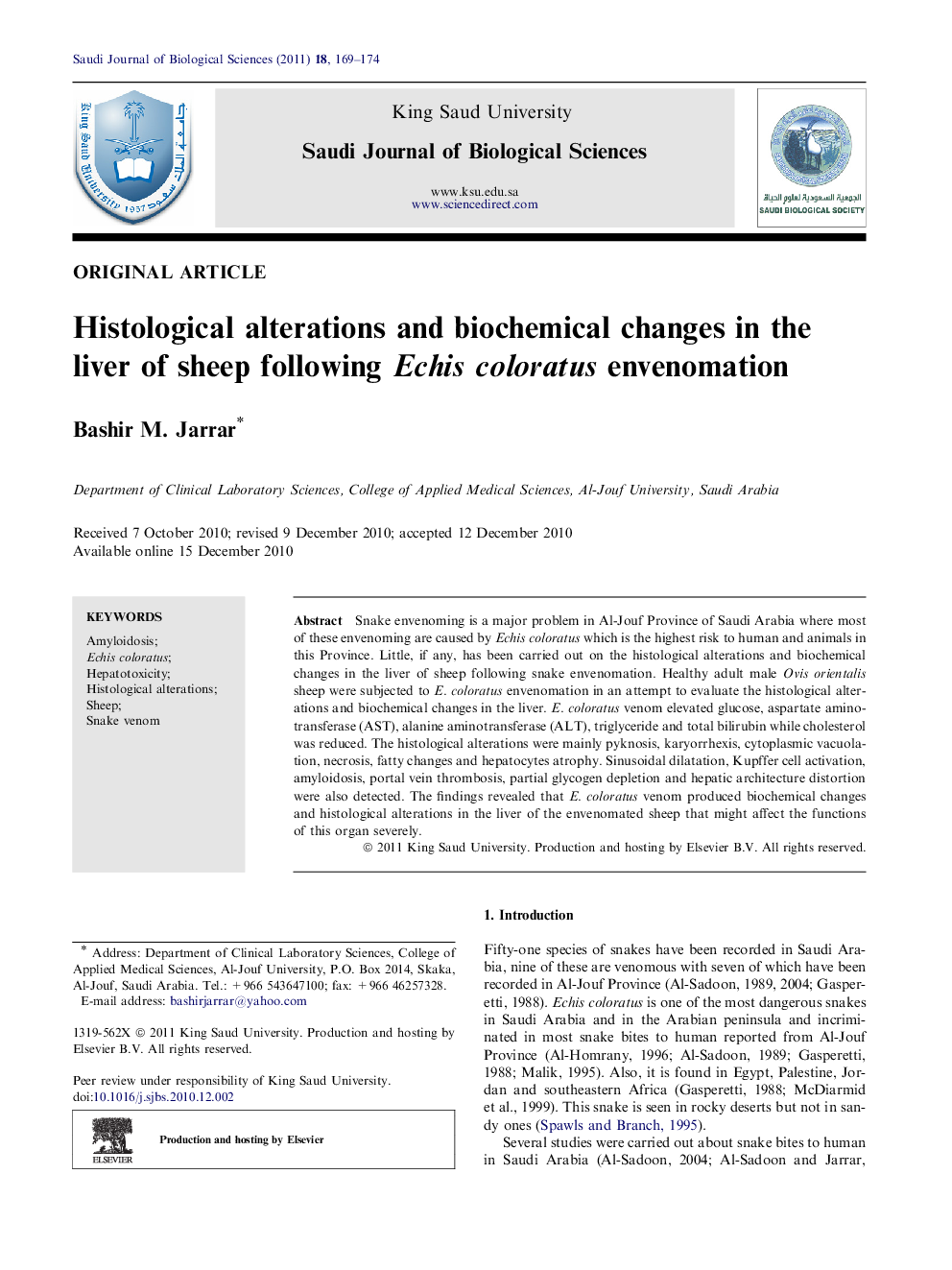| Article ID | Journal | Published Year | Pages | File Type |
|---|---|---|---|---|
| 4406658 | Saudi Journal of Biological Sciences | 2011 | 6 Pages |
Snake envenoming is a major problem in Al-Jouf Province of Saudi Arabia where most of these envenoming are caused by Echis coloratus which is the highest risk to human and animals in this Province. Little, if any, has been carried out on the histological alterations and biochemical changes in the liver of sheep following snake envenomation. Healthy adult male Ovis orientalis sheep were subjected to E. coloratus envenomation in an attempt to evaluate the histological alterations and biochemical changes in the liver. E. coloratus venom elevated glucose, aspartate aminotransferase (AST), alanine aminotransferase (ALT), triglyceride and total bilirubin while cholesterol was reduced. The histological alterations were mainly pyknosis, karyorrhexis, cytoplasmic vacuolation, necrosis, fatty changes and hepatocytes atrophy. Sinusoidal dilatation, Kupffer cell activation, amyloidosis, portal vein thrombosis, partial glycogen depletion and hepatic architecture distortion were also detected. The findings revealed that E. coloratus venom produced biochemical changes and histological alterations in the liver of the envenomated sheep that might affect the functions of this organ severely.
